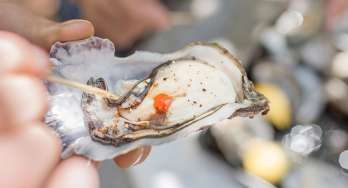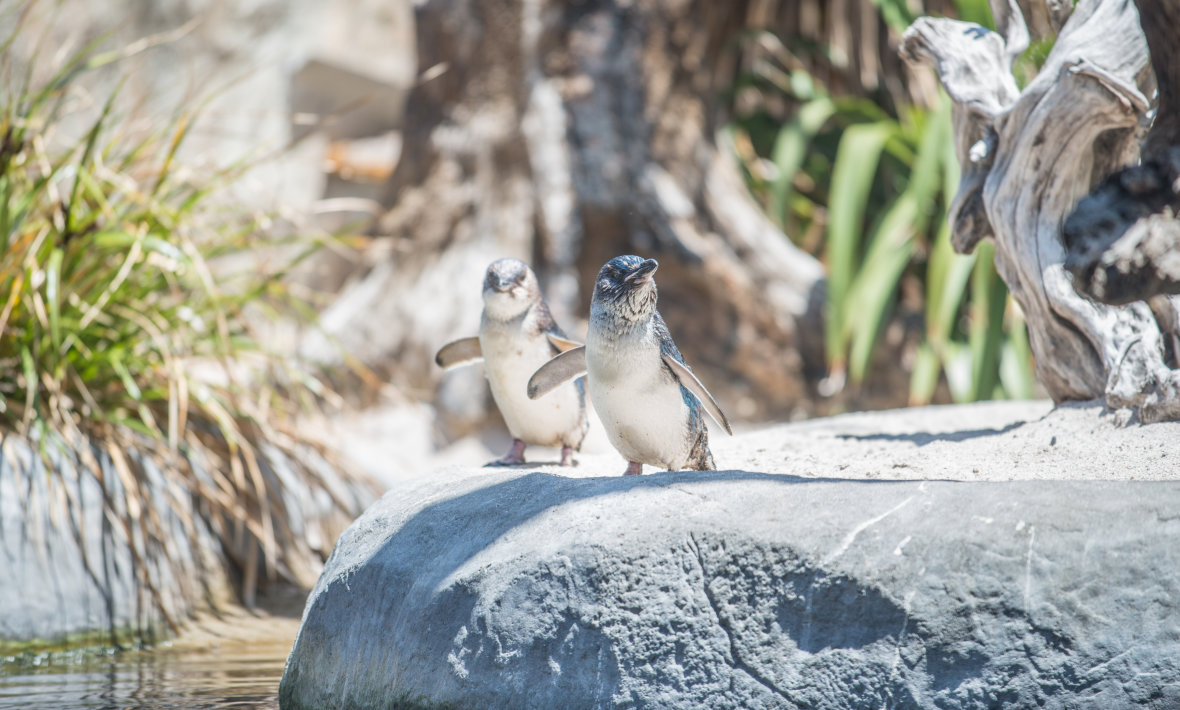


Join thousands of fellow campervan travellers
Sign up for our Britz newsletter to receive inspirational travel content and awesome deals, and we'll send you a copy of our Ultimate RV guide!
Thanks
Please confirm subscription in your email.
Why do people go to Penguin Place?
People come to Penguin Place, Dunedin, for one simple reason: the chance to see the incredibly rare yellow-eyed penguins. These guys are one of the most endangered penguin species out there, and Penguin Place is one of the best places to observe them in the wild and support penguin conservation in New Zealand. It’s a real treat to watch them going about their day, and the whole experience feels even more special knowing that the sanctuary is working hard to protect and conserve these beautiful birds.
The guided tours at Penguin Place are super informative, showing you how the sanctuary helps with penguin rehabilitation and breeding programs. You'll also get the chance to visit the penguin hospital in Dunedin, which is just one of the many cool parts of the tour. It’s not just about the penguins, either – you’ll also get to learn about the broader eco-tourism initiatives on the Otago Peninsula.
How long should I spend at Penguin Place?
You’ll want to give yourself around 1.5 to 2 hours at Penguin Place to really soak in the experience. The guided tour takes about 45 minutes to an hour, kicking off with a short but informative presentation, and then it’s time to hit the trails (well, underground walkways, really) to check out the penguins in action. You’ll also swing by the penguin hospital (yes, that’s a real thing) where sick or injured penguins are nursed back to health. If you’re keen on Dunedin wildlife tours that combine nature with purpose, this one’s a must.
Where to spot penguins in Dunedin?
If you’re in Dunedin and on the hunt for penguins, Penguin Place is definitely your best bet for seeing the yellow-eyed penguins in their natural habitat. The sanctuary provides a great opportunity to get up close and personal with these rare birds while also learning about the important work being done to protect them.
Aside from Penguin Place, another spot worth checking out is Pilots Beach at Taiaroa Head on the Otago Peninsula, where you can often spot both yellow-eyed penguins and little blue penguins. If you’re keen to dive deeper into penguin sightings and conservation efforts, though, Penguin Place Dunedin is a must-do.
How to get to Penguin Place
Getting to Penguin Place is super easy and totally worth the scenic drive. From the city centre in Dunedin, it’s about a 45-minute drive out to the Otago Peninsula. You’ll head out on Highcliff Road or Portobello Road, both of which offer beautiful views as you make your way toward the sanctuary. Once you’re on Pakihau Road, you’ll find the entrance to Penguin Place at 45 Pakihau Road, Harington Point.
And if you're travelling in a campervan or motorhome, no worries, there’s plenty of space to park. They’ve got a free dedicated parking area near the visitor centre, and it’s big enough to accommodate larger vehicles, so you won’t have to stress about finding a spot.
Best time to visit Penguin Place
Timing is everything if you want prime penguin action. The best months to visit are from September to February (aka penguin parenting season). In spring and early summer (Sep–Dec), you’ll catch nesting and maybe even a fluffy chick or two. Mid to late summer (Jan–Feb) is all about feeding time, so you’ll see penguins heading back to shore during the day.
-
Spring to early summer (Sep–Dec) is great for active nesting and penguin sightings, as they’re busy preparing their nests.
-
Mid to late summer (Jan–Feb) is ideal for seeing chicks being fed, and penguins tend to come ashore during the day, which makes for some excellent viewing opportunities.
-
If you’re visiting between March and August, expect fewer penguins since they’ll be spending more time at sea or moulting.
As for the time of day? Aim for late afternoon to early evening, from about 3 PM onwards. That’s when the penguins wrap up their ocean exploring and waddle back home. Penguin Place cleverly times their tours to line up with nature’s schedule, which makes sightings feel effortless.

Weather at penguin place
The weather at Penguin Place can be a bit unpredictable, so it’s always a good idea to pack for any conditions. The peninsula tends to be cool and breezy, no matter the time of year, so bring along warm layers and a waterproof jacket when you visit Penguin Place. It’s also worth noting that the weather can change quickly, so having those layers handy will help you stay comfortable as you explore this New Zealand eco-tourism hotspot. Overall, it’s just part of the wild charm of the area.
Best place to park your campervan at Penguin Place
If you’re travelling in a campervan or motorhome, you’ll be pleased to know that Penguin Place has a free and spacious parking area right by the entrance. It’s located just off Pakihau Road, close to the visitor centre, so you won’t have to wander too far. The parking is super easy to access, and it’s big enough for larger vehicles, so you won’t need to worry about squeezing into a tight spot. Plus, it’s free, so you can just park up and enjoy your visit without worrying about parking fees.
